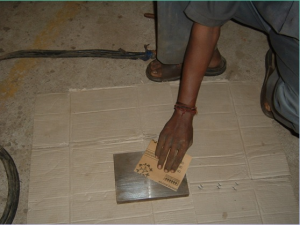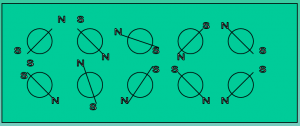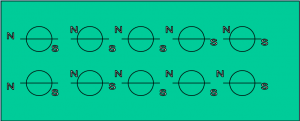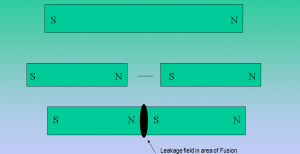MT MAGNETIC PARTICLE TESTING
MAGNETIC PARTICLE TESTING MT:
MT is based on the principle of magnetisation of materials.
STEPS INVOLVED IN MAGNETIC PARTICLE TESTING MT:
- Pre clean the surface.
- Demagnetize the object.
- Clean the surface.
- Inspect visually for any gross irregularity.
- Magnetise the object.
- Apply the magnetic particles.
- Observe for indications and mark them..
- Record the observations.
- Clean and de-magnetize the object.
- Apply protective coating.
CLEAN THE SURFACE:
MAGNETIZM:
Random Orientation Of Molecules
in an Un-magnetized Specimen
Magnetically Aligned Molecules
in a Magnetized Specimen
Cut-and-Fused Bar Magnet Illustrating Opposite Polarity
DOMAIN:
A saturated macroscopic structure in ferromagnetic materials where the elementary particles (electron spins) are aligned in one direction by inter atomic forces. A domain would be a saturated permanent magnet.
RETENTIVITY:
- The capacity of a substance to retain magnetism after the magnetizing force is reduced to zero.
COERCIVE FORCE:
- The magnetizing field strength required to bring the magnetic flux density of a magnetized material to zero.
LONGITUDINAL MAGNETIZATION:
- Magnetization in which the flux lines traverse the component in a direction essentially parallel to its longitudinal axis.
CIRCULAR MAGNETIZATION:
- The magnetization in an object resulting from current passed longitudinally through the object itself or through an inserted central conductor.
CURRENT FOR MAGNETIZATION:
- AC.
- DC.
- HWDC.
APPLICATION OF MAGNETIC PARTICLE TESTING MT:
- Can be applied for detection of both surface and sub-surface discontinuities.
- Cost of testing MT is comparatively lower than other methods.
- Required level of operator skill is not high .
- Portable and Stationery equipments are available.
- MT have permanent records of the indications.
- Interpretation of indications is not difficult .
LIMITATIONS OF MAGNETIC PARTICLE TESTING MT:
- Volumetric discontinuities cannot be detected. Depth of detection is up to 6mm only.
- Can be applied only on ferromagnetic materials
- Possibility of local overheating and burning exist.







